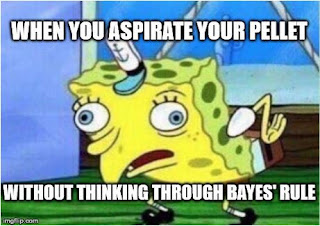Keeping track of bits and bytes.
The Module One report was possibly the most complicated assignment I've ever had. It pulled data from more places than a high school
science fair board, and covered more diverse sources than a literary analysis
essay.
The closest I’ve had was maybe a research paper my sophomore
English teacher assigned us. She required that we cite several websites and
physical books, with in-paragraph citations. I read through all of my sources,
made sure they corroborated, and wrote a stellar text that made the individual
facts flow together, had great diction, and a note where all the citations
would be. Then I realized I didn’t know which fact had come from which source,
and I had a sad time combing through texts trying to reverse-engineer my essay.
For this project, I mostly managed to avoid that error by
copying facts and sources into my outline. However, every now and then I’d
write something and realize it had come from a source other than my experiment.
Then I'd have to choose: should I pause what I was working on and abandon my
flow to chase down the fact I was weaving in, or keep going and come back to it
later?
For this project, I mostly chased down facts. Unfortunately,
I usually found other small items that needed corrections. It would have been
so easy to submit tour report with the wrong figure numbers referenced in the
body text! This meant that it was 10 minutes before I returned to the original
paragraph I was writing, and I felt I wasn’t managing my time effectively. To
combat that, I started making a to-do list, organized by section of the report,
and that helped.
But there was another reason I felt that I wasn’t managing
my time effectively: the first twenty times I tried to do data analysis, it
took me ten minutes to reorient myself in the data. Both the DSF and PPIase
data came in Excel worksheets with averages and triplicates and team data
pulled from a sea of numbers, and sometimes I forgot what DSF stood for and why
we wanted the second and not the first derivative. I could talk myself through
and figure out what exactly each graph meant, but I took a while. That was
never an issue for high school science projects; those charts were simple, with
data I collected myself (and had only four conditions in triplicate, not nine)
in a format I chose.
I understand that I’m just going to have to get used to
Excel sheets and non-intuitive formats. I am not the software designer of a bio-instrumentation
company; I may collaborate with other scientists and have to adjust to their data
collection methods. And I’m not upset about that. It’s just good to know and
practice wrapping my mind around new data tables.
I’m also going to have to find the balance between finishing
the big things, like an abstract, in one sitting and chasing down tidbits, like
citations.

Comments
Post a Comment